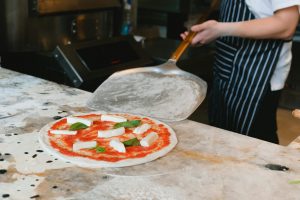How Food Stories Bridge Cultural Divides
Food is more than just a means of sustenance. It is a universal language that transcends cultural barriers and brings people together. It has the power to not only nourish our bodies, but also our souls. A plate of food can tell a story, and these stories have the ability to bridge cultural divides. In a world that is becoming increasingly divided, food has the unique ability to bring us closer and remind us of our shared humanity. In this article, we will explore how food stories have the power to bridge cultural divides and foster understanding and unity.
The Power of Food Stories
Recipes have been handed down from generation to generation, carrying with them the history, traditions, and values of a culture. Every dish has a story to tell, and it is through these stories that we can gain a deeper understanding of different cultures. Food stories have the power to break down stereotypes and promote cultural exchange. They allow us to step into someone else’s shoes and experience their culture through their cuisine.
Breaking Down Barriers
Language
Food is a universal language that everyone can understand. No matter where we come from, we all need to eat. When we share a meal with someone from a different culture, we are able to communicate through the flavors, aromas, and textures of the food. This allows us to connect with others and form a bond, even if we don’t speak the same language.
Prejudice and Discrimination
Food stories can also break down barriers by challenging prejudice and discrimination. Often, negative attitudes stem from a lack of understanding and familiarity with a particular culture. By sharing food and the stories behind them, we can humanize different cultures and dispel stereotypes. This can lead to greater acceptance and empathy towards others.
Cross-Cultural Exchange
Food stories promote cross-cultural exchange by providing a glimpse into the traditions, values, and way of life of different cultures. When we try new cuisines, we are exposed to new flavors, ingredients, and cooking techniques. We can learn about the history of a dish, the significance of certain ingredients, and the rituals and customs associated with it. This helps us gain a deeper understanding and appreciation for different cultures.
Creating Connection and Understanding
Connecting Through Home-cooked Meals
Home-cooked meals have a special way of bringing people together. When someone opens up their home and invites you to share a meal, it is a gesture of trust and warmth. Through home-cooked meals, we are able to learn more about someone’s culture and feel a sense of connection and belonging.
Creating Empathy
Food stories can also create empathy by highlighting the commonalities between different cultures. For example, many cultures have a version of dumplings, whether it’s Chinese dumplings, Polish pierogis, or Italian ravioli. By recognizing these similarities, we can realize that we are not so different after all.
Fostering Unity
In a world that is becoming increasingly divided, food stories have the power to bring people together and foster unity. By sharing a meal with someone from a different culture, we are able to see past our differences and find a common ground. Food has a way of breaking down walls and building bridges.
Final Thoughts
Food stories are more than just recipes. They are windows into different cultures and have the power to bring us closer together. In a world that is becoming increasingly divided, food has the unique ability to bridge cultural divides, promote understanding, and foster unity. So let us continue to share our food and our stories, for they have the power to bring about positive change in our world.










